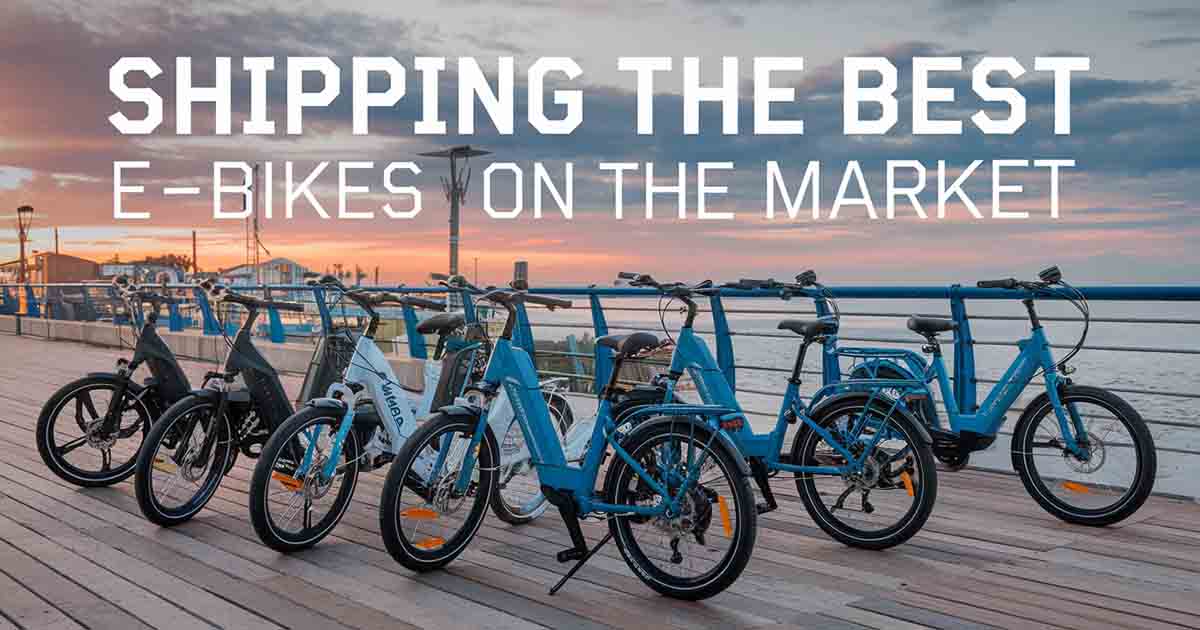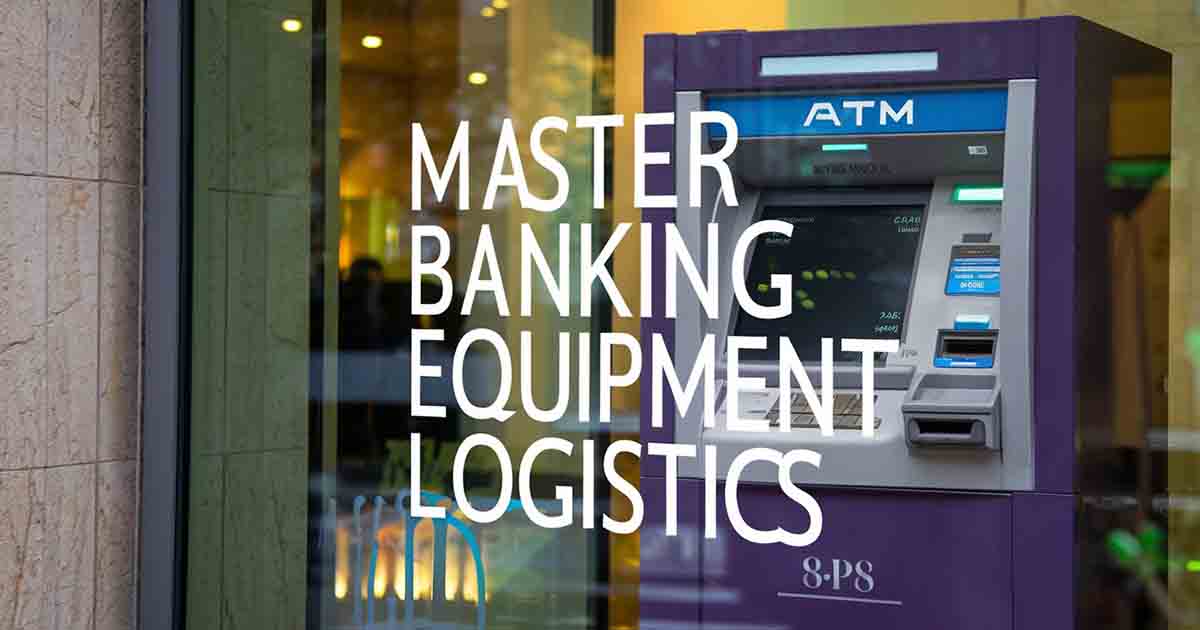- How Are Data Analytics Applied in Delivery Operations?
- How Do You Use Data Analytics to Streamline Product Delivery?
- What Are the Key Metrics for Evaluating the Success of Product Deliveries?
- What Are the Important KPIs to Track?
- How Do You Implement a Data-Driven Culture?
- Additional Insights and Case Studies
In today’s fast-paced business environment, leveraging data analytics is crucial for optimizing various operations, including the logistics of delivering a company’s products. Think of it like a skilled chef using precise measurements and timing to create a perfect dish; logistics managers use data to finely tune their operations for maximum efficiency and cost savings. This blog explores how data analytics can streamline product delivery operations and highlights key metrics (KPIs) essential for evaluating the success of these processes, emphasizing the importance of a specialized service like Moveitem.com. For more detailed information on efficient logistics practices, including cost considerations, check out our comprehensive guide on how to ship large items.
“Without big data, you are blind and deaf and in the middle of a freeway.” — Geoffrey Moore
The Role of Data Analytics in Product Delivery
Definition and Importance Data analytics involves examining raw data to draw meaningful insights and make informed decisions. In the context of logistics and product delivery, data analytics can transform how companies plan, execute, and evaluate their shipping and distribution operations. The benefits include cost savings, improved efficiency, enhanced customer satisfaction, and better resource management.
How Are Data Analytics Applied in Delivery Operations?
Predictive Analytics for Demand Forecasting
By analyzing historical data, companies can predict future demand for their products, helping to allocate resources more effectively and avoid unnecessary expenses. This proactive approach ensures that companies are not caught off guard by unexpected demand surges or lulls, allowing for better resource management and planning. For example, a company that can predict an uptick in product demand during certain seasons can better prepare by increasing inventory and in concert with MoveItem optimize delivery schedules in advance.
Route Optimization Using Real-Time Data
The MoveItem network utilizes GPS and IoT devices to provide real-time data that can be used to optimize routes, reducing transit times and fuel costs. Route optimization not only saves time and money but also enhances reliability and customer satisfaction by ensuring timely deliveries. Advanced route optimization algorithms can analyze traffic patterns, weather conditions, and roadworks to find the most efficient routes. This reduces transit time while minimizing fuel consumption and vehicle wear and tear, leading to significant cost savings which MoveItem passes on to you.
Inventory Management and Tracking
MoveItem’s cutting-edge clients use data analytics to keep track of inventory during the delivery process, ensuring that products are delivered as promised. Real-time tracking and updates allow logistics managers to have a clear view of their inventory status, improving accountability. This is particularly important in large-scale product deliveries and reverse logistics where reliability is paramount.
Enhancing Customer Service Through Data-Driven Insights
Analyzing customer feedback and satisfaction data allows companies to improve their services and address any issues promptly. Understanding customer pain points and preferences helps in tailoring services to meet their needs more effectively. For instance, data analytics can identify common complaints such as delayed deliveries or damaged products, allowing companies to implement targeted improvements and enhance overall customer satisfaction.
How Do You Use Data Analytics to Streamline Product Delivery?
At Moveitem.com, we specialize in moving large, heavy, fragile, and high-value items. Our comprehensive approach to data analytics helps us streamline product delivery operations and ensure that our customers receive the best possible service. Here’s how we do it:
Collecting and Integrating Data
Data collection is the first step in leveraging analytics. At Moveitem.com, sources include GPS systems, IoT devices, CRM systems, and customer feedback. Integrating data from these various sources provides a comprehensive view of the delivery process. For instance, combining data from CRM systems with GPS tracking data gives insights into customer behavior and preferences, as well as logistical efficiencies. By centralizing data from different sources, we gain a holistic view of our operations, enabling more informed decision-making.
Analyzing Data for Insights
Using data collection tools, our delivery professionals analyze data to uncover patterns and trends. Key areas to focus on include transportation costs, transit times, and labor utilization. Advanced analytics can identify inefficiencies and suggest areas for improvement. For example, data analysis might reveal that certain routes consistently take longer than expected, prompting a review of those routes for potential optimization. Our internal software creates a dashboard for our team that is priority-coded to help us get ahead of issues.
Implementing Data-Driven Decisions
Data-driven decisions can significantly enhance product delivery operations. For example, analyzing route data can help in selecting the fastest and most cost-effective paths. A case study of a successful product delivery demonstrates how data analytics led to improved efficiency and reduced costs. By adopting a data-driven approach, our logistics managers make more informed decisions that directly impact the bottom line. For instance, a logistics manager might use data to identify underutilized resources, allowing for better allocation and scheduling.
What Are the Key Metrics for Evaluating the Success of Product Deliveries?
| Key Metric | Description | Importance |
|---|---|---|
| On-Time Delivery Rate | Measures the percentage of deliveries completed on time. | Indicates efficiency in planning and execution, crucial for customer satisfaction. [1] |
| Cost Per Delivery | Tracks the total cost involved in each delivery. | Helps identify areas for cost reduction and improve profitability. [2] |
| Customer Satisfaction | Assessed through surveys and feedback from customers. | Reflects the success of the delivery process from the customer’s perspective. [3] |
| Damage Rates | Monitors the incidence of damage during deliveries. | Indicates the effectiveness of handling and packing practices. [4] |
| Employee Productivity | Measures labor efficiency during the delivery process. | Helps optimize workforce utilization and improve scheduling. [5] |
| Transit Time Variability | Evaluates consistency in transit times. | Ensures predictable and reliable delivery operations. [6] |
Disclaimer: The information provided in this table is for educational purposes only and should not be considered as financial or professional advice. Sources: [1] Logistics Bureau, [2] Inbound Logistics, [3] Gartner, [4] Supply Chain Dive, [5] McKinsey & Company, [6] Deloitte.
Overview of KPIs
Key Performance Indicators (KPIs) are essential metrics that help in assessing the efficiency and effectiveness of product deliveries. Tracking these metrics enables logistics managers to make data-informed decisions and continually improve their operations. By focusing on KPIs, companies can set measurable goals and track their progress over time, ensuring continuous improvement.
What Are the Important KPIs to Track?
On-Time Delivery Rate
Measures the percentage of product deliveries completed on time. High on-time delivery rates that you can expect from Move Item indicate efficient planning and execution. This metric is crucial for maintaining customer satisfaction and operational efficiency. For instance, a company that consistently meets its delivery deadlines is more likely to retain customers and attract new business.
Cost Per Delivery (CPD)
Tracks the total cost involved in each product delivery. Analyzing this metric helps in identifying areas for cost reduction. By understanding the CPD, companies can implement strategies to minimize expenses. For example, data analysis might reveal that certain aspects of the delivery, such as packaging materials(some of which we can handle for you) or labor costs, are contributing disproportionately to the overall cost, prompting targeted cost-saving measures.
Customer Satisfaction
Assessed through surveys and feedback, this metric gauges how satisfied customers are with the delivery services. High satisfaction levels are indicative of successful product deliveries. Understanding customer satisfaction helps in refining services and addressing any issues promptly. For instance, customer feedback can be used to improve communication during the delivery process, ensuring that you are kept informed at every stage.
Damage Rates
Monitor the incidence of damage during product deliveries. We are proud of our low damage rates, which suggest better handling and packing practices. This metric is crucial for maintaining the integrity of the products being delivered and ensuring customer satisfaction. For instance, a company with low damage rates is likely to have a better reputation and attract more business. This is a win-win for us and our clients.
Employee Productivity, Engagement, and Retention
Measures labor efficiency during the delivery process. Data-driven strategies can help you optimize workforce utilization. Understanding employee productivity helps in scheduling and allocating resources more effectively. To illustrate, your company might use data to identify periods of low productivity and implement measures to improve efficiency, such as additional training or better scheduling.
Data analytics can also provide insights into employee engagement and retention. By analyzing data on employee satisfaction, turnover rates, and performance, companies can identify factors that contribute to employee retention and engagement. This can help in creating a more positive work environment and reduce turnover rates.
| Factor | Description | Impact on Engagement |
|---|---|---|
| Recognition and Rewards | Regular acknowledgment and rewards for achievements. | Significantly boosts motivation and satisfaction. |
| Career Development | Opportunities for growth and skill development. | Enhances commitment and reduces turnover. |
| Work-Life Balance | Flexible schedules and consideration of personal life. | Improves overall job satisfaction and reduces stress. |
| Management Support | Strong, supportive leadership and clear communication. | Encourages trust and loyalty among employees. |
| Company Culture | Positive, inclusive, and value-driven work environment. | Strengthens sense of belonging and engagement. |
| Employee Autonomy | Freedom to make decisions and take ownership of work. | Increases job satisfaction and intrinsic motivation. |
| Feedback Mechanisms | Regular, constructive feedback and open communication. | Helps in continuous improvement and personal development. |
| Health and Wellbeing | Initiatives to support physical and mental health. | Reduces absenteeism and increases productivity. |
| Job Security | Assurance of stable employment and career prospects. | Reduces anxiety and enhances commitment to the organization. |
Citations:
1. Gallup: “State of the Global Workplace 2021 Report”
2. Harvard Business Review: “The Impact of Employee Engagement on Performance”
3. SHRM: “Employee Engagement and Job Satisfaction”
Disclaimer: The information provided in this chart is based on research and reports from reputable sources. It is intended for educational purposes only and should not be considered as professional or financial advice. The impact of each factor on employee engagement may vary depending on the specific context and organizational environment.
Transit Time Variability
Evaluating consistency in transit times is crucial for reducing variability and achieving more predictable and reliable product delivery operations. This metric aids in planning and scheduling, ensuring that deadlines are consistently met. Specifically, a company that can deliver within a specified time frame is likely to build stronger customer relationships and gain a competitive edge. For further details on how we ensure timely deliveries, visit our FAQs page.
Customer Acquisition and Retention
A comprehensive data analytics strategy can help you identify trends in customer acquisition and retention. By analyzing data on customer demographics, preferences, and behaviors, companies can tailor their marketing and service delivery strategies to attract new clients and retain existing ones. For example, data might reveal that a significant number of clients are acquired through referrals, prompting the company to invest more in referral programs.
Service Downtime and Response Time
Measuring the downtime and response time during product deliveries is crucial for assessing operational efficiency. By tracking these metrics, we can identify bottlenecks and implement strategies to minimize downtime and enhance response times. For example, if data shows that vehicle breakdowns are a common cause of downtime, MoveItem might identify trucking companies with better maintenance practices or newer vehicles.
How Do You Implement a Data-Driven Culture?
Building a Data-Driven Team
Training and upskilling employees in data analytics are crucial for building a data-driven culture. Encouraging continuous improvement and innovation helps in maintaining competitiveness. Employees who are proficient in data analysis can contribute more effectively to decision-making processes. For instance, MoveItem understands data analytics and can use insights to optimize routes, reduce costs, and improve customer satisfaction.
Technology and Tools
Investing in the right technology and tools is essential for effective data analytics. Ensuring data security and privacy is also critical in protecting sensitive information. Tools like advanced analytics software, IoT devices, and secure data storage solutions are fundamental for successful implementation. For instance, we invest in comprehensive data analytics platforms that integrate with our existing systems, providing a seamless flow of information and insights.
Monitoring and Adjusting Strategies
Regularly reviewing analytics and KPIs allows logistics managers to adjust strategies based on data insights. Our continuous monitoring ensures that the delivery processes remain efficient and effective. This iterative process helps in refining operations and staying ahead of any potential issues. Notably, our data analytics could identify a recurring issue, such as delays on a particular route, and implement measures to address it.
Cultivating a Data-Driven Mindset
Developing a mindset that values data-driven decision-making is essential for the long-term success of implementing data analytics. This involves fostering a culture where data is seen as a valuable asset and is consistently used to guide decisions. Regular training sessions, workshops, and collaborative projects can help in building this mindset across the organization. One example of this is, we hold regular training sessions on data analytics, ensuring that all employees are equipped with the necessary skills and knowledge.
Leveraging Advanced Analytics and AI
Incorporating advanced analytics and artificial intelligence (AI) can take data-driven decision-making to the next level. At MoveItem, we use AI to help analyze and identify patterns that may not be immediately apparent to human analysts. Predictive analytics, powered by AI, forecasts trends and provides actionable insights that enhance planning and operational efficiency. For instance, AI-powered analytics tools might identify patterns in customer behavior, allowing us to anticipate demand and optimize operations accordingly.
Enhancing Collaboration Through Data
One often overlooked benefit of data analytics is its ability to enhance collaboration across different departments and teams within an organization. By providing a unified view of operations and performance metrics, data analytics can break down silos and foster a more collaborative environment. Take the sales team working closely with the logistics team, for example, to forecast demand more accurately, ensuring that resources are allocated efficiently.
Data-Driven Marketing Strategies
Data analytics can also play a crucial role in shaping marketing strategies. By analyzing customer data, companies such as yours can identify key demographics, preferences, and buying behaviors, allowing for more targeted and effective marketing campaigns. For example, a company might use data analytics to identify high-value customers and tailor their marketing efforts to retain and attract similar clients.
Sustainability and Environmental Impact
In today’s business environment, sustainability is a key consideration. Data analytics helps us reduce environmental impact by optimizing routes, reducing fuel consumption, and minimizing waste. Notably, data analytics identifies the most fuel-efficient routes and highlights opportunities for consolidating shipments, leading to a reduction in carbon emissions.
Regulatory Compliance
Regulatory compliance is another area where data analytics provides significant benefits. By keeping track of regulatory requirements and ensuring that all operations comply with relevant laws and regulations, we avoid costly fines and legal issues. Data analytics helps automate the tracking of compliance-related data, making it easier to stay compliant.
Benchmarking and Competitive Analysis
Data analytics allows companies to benchmark performance against industry standards and competitors. By understanding where they stand in relation to their peers, companies can identify areas for improvement and set realistic performance targets. For instance, we might use data analytics to compare our on-time delivery rates with industry averages and implement strategies to improve performance. For more information on how different industries benefit from our services, visit our industries page.
Risk Management
Effective risk management is crucial for the success of any product delivery process. Data analytics can help identify potential risks and implement measures to mitigate them. Predictive analytics, for example, can forecast potential delays or issues based on historical data, allowing us to take proactive measures to avoid disruptions.
Customer Experience
Ultimately, the goal of leveraging data analytics is to improve the customer experience. By providing more reliable, efficient, and transparent delivery services, we can enhance customer satisfaction and build stronger relationships with our clients. For instance, real-time tracking and updates can provide you with peace of mind, knowing exactly where deliveries are and when they will arrive.
Additional Insights and Case Studies
Case Study: This is Why We Are Transforming Product Deliveries with Data Analytics
In a recent case study, a multinational corporation faced challenges with inconsistent delivery times and high delivery costs. By integrating data analytics into their logistics processes, they achieved a 20% reduction in transit time variability and a 15% cost reduction. The key to their success was the use of predictive analytics for demand forecasting and real-time route optimization. By identifying patterns and trends in their data, they were able to make more informed decisions, leading to significant improvements in efficiency and cost-effectiveness.(DHL, 2023)
For more details, you can refer to the full case study here.
As We Move Forward: The Future of Data Analytics in Product Delivery
As technology continues to evolve, the role of data analytics in product delivery will become even more critical. Emerging technologies like blockchain, augmented reality (AR), and virtual reality (VR) are set to revolutionize the logistics industry. Blockchain can provide transparency and security in tracking shipments, while AR and VR can enhance planning and training processes. For example, blockchain technology can create an immutable record of the entire delivery process, providing a transparent and secure way to track shipments and reduce the risk of fraud.
Practical Steps for Logistics Managers to Implement
- Start Small and Scale: Begin with pilot projects to demonstrate the value of data analytics. Once successful, scale these initiatives across the organization. For instance, a company might start by implementing data analytics in one aspect of their operations, such as route optimization, before expanding to other areas.
- Invest in Training: Regularly train staff on the latest data analytics tools and techniques to ensure they can leverage these technologies effectively. This can involve formal training sessions, workshops, and on-the-job training.
- Collaborate with Experts: Partner with data analytics experts and consultants who can provide guidance and insights tailored to your specific needs. This can help in overcoming any challenges and ensuring the successful implementation of data analytics.
- Continuously Monitor and Improve: Regularly review performance metrics and adjust strategies as needed to maintain efficiency and effectiveness. This involves setting up a system for continuous monitoring and improvement, ensuring that the company remains agile and responsive to changing conditions.
By incorporating the insights and strategies outlined in this blog, logistics managers can ensure that their product delivery processes are not only efficient and cost-effective but also aligned with the latest industry trends and best practices. At Moveitem.com, we are committed to helping businesses optimize their logistics operations through innovative solutions and dedicated support.
Trust Moveitem.com
Leveraging data analytics with Moveitem.com ensures that your product delivery process is optimized for efficiency and reliability. Our advanced data tools and expertise allow us to analyze and streamline every aspect of logistics, from route planning and delivery scheduling to real-time tracking and cost management. By utilizing data-driven insights, we can ensure that your products reach their destination safely and on time, minimizing delays and reducing costs. Discover how Moveitem.com can enhance your delivery operations with cutting-edge data analytics. Contact us today to learn more and get a quote.
More Great Resources from our Team to You.
Case Study | Nationwide Shipping Service
Posted By

Clint Lawrence, founder of MoveItem.com. Helping give customers Safe, Simple, and Sustainable Shipping Solutions.rever









